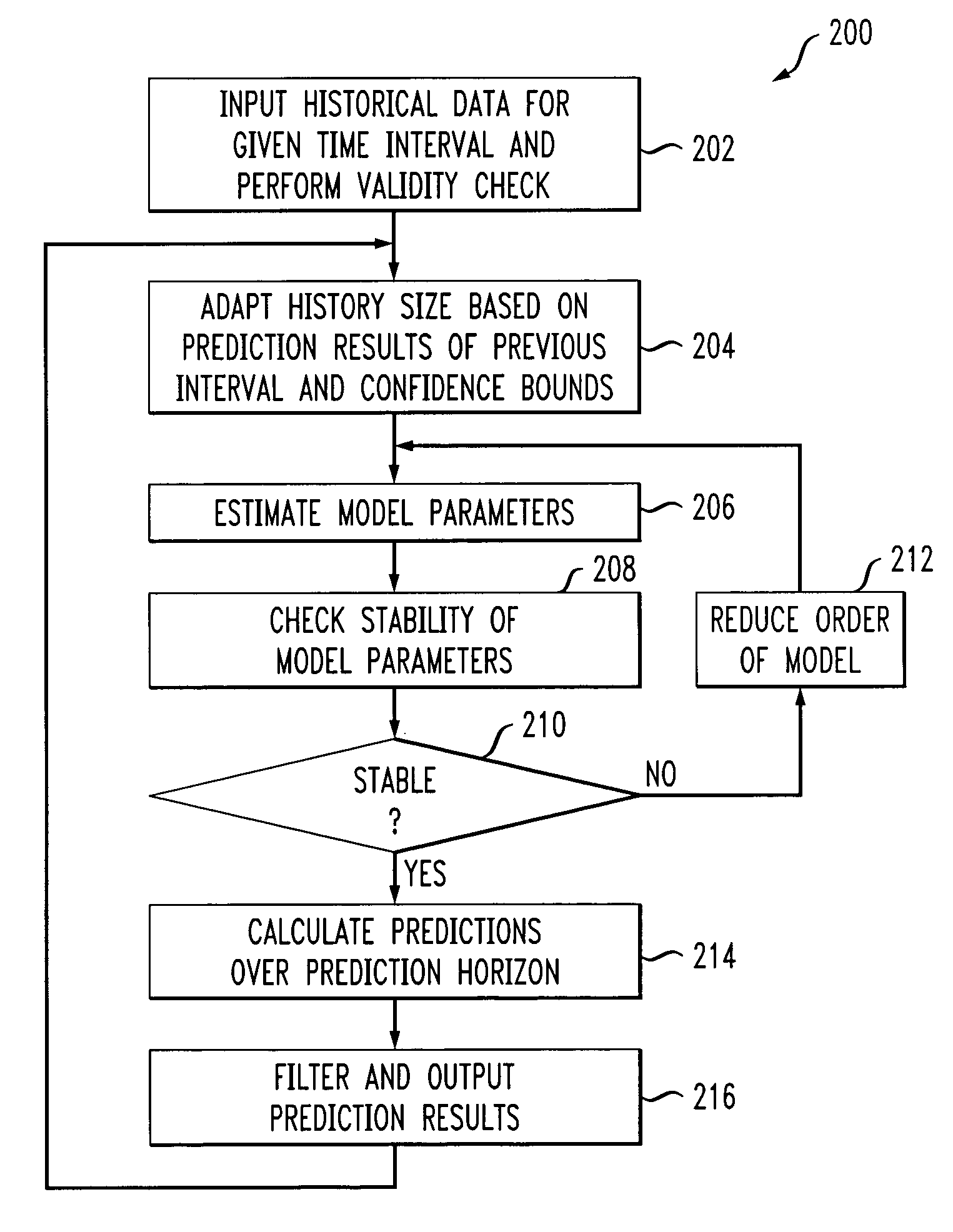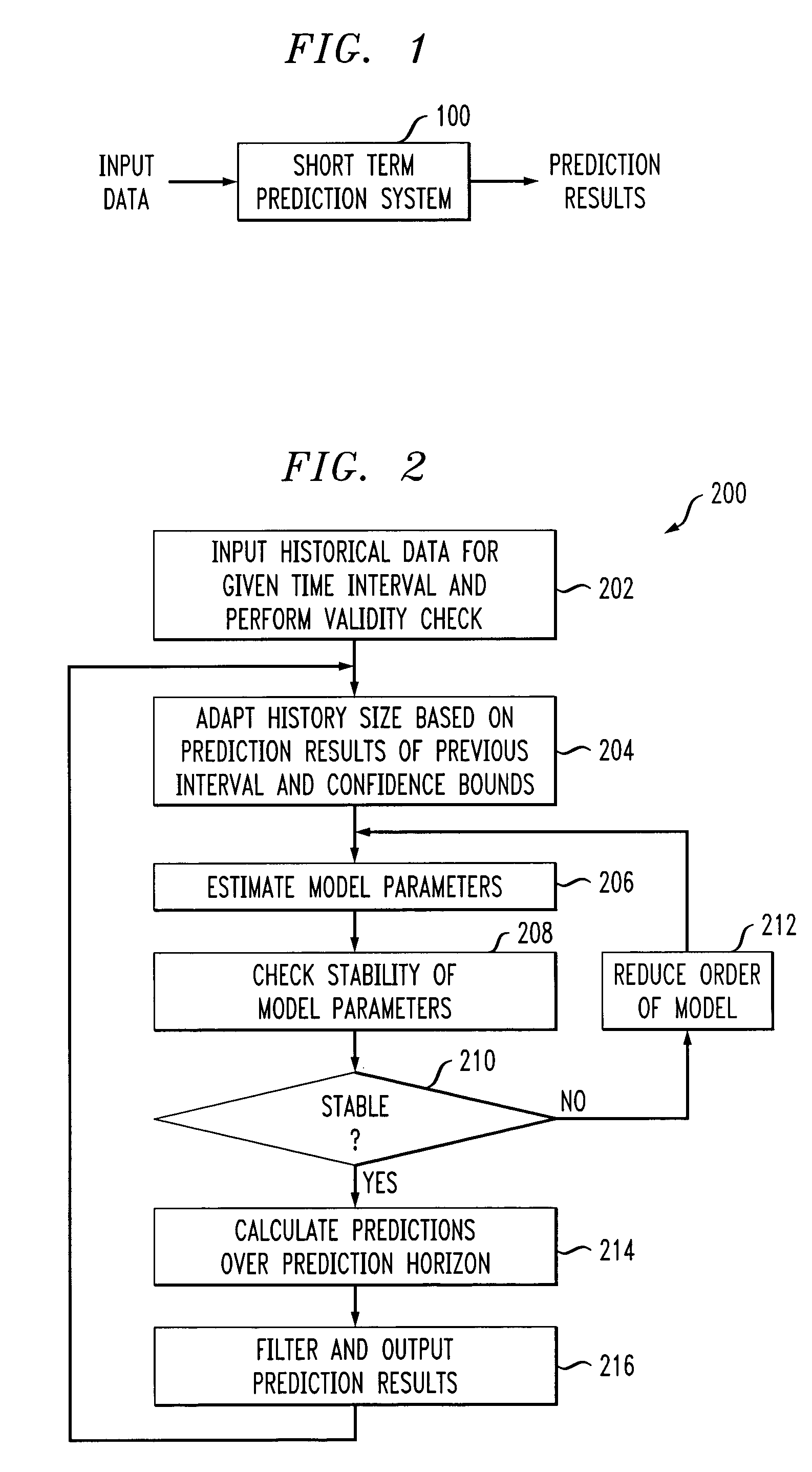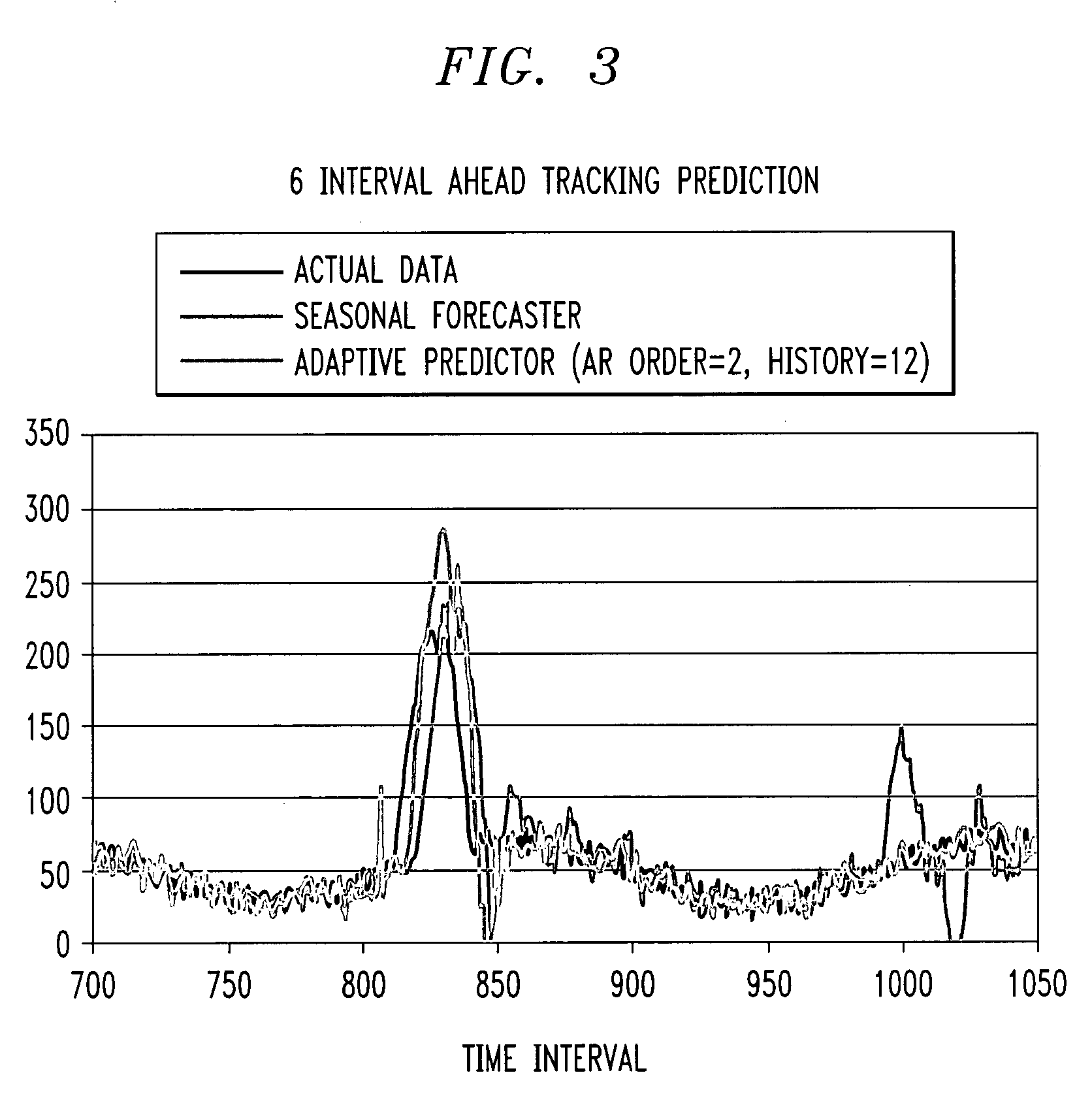Methods and apparatus for performing adaptive and robust prediction
a robust prediction and adaptive technology, applied in multi-programming arrangements, instruments, nuclear elements, etc., can solve problems such as service outage, inability of long-term forecasters to adapt quickly, and ineffective long-term forecasting approaches
- Summary
- Abstract
- Description
- Claims
- Application Information
AI Technical Summary
Benefits of technology
Problems solved by technology
Method used
Image
Examples
Embodiment Construction
[0025]The present invention will be explained below in the context of an illustrative computing resource-based network environment. In this illustrative context, computing resources (e.g., application servers, database connections, input / output paths, etc.) associated with one or more applications are automatically or autonomically managed using workload prediction techniques of the invention so as to provide resource deployment to satisfactorily maintain one or more service objectives in the face of variable workload. However, it is to be understood that the invention is not limited to such an environment. Rather, the invention is more generally applicable to any environment in which it would be desirable to provide adaptive and robust prediction techniques. By way of further example, but not limited thereto, the prediction techniques of the invention may be employed for economic or sales forecasting purposes.
[0026]As is known, an “application” generally refers to a one or more com...
PUM
 Login to View More
Login to View More Abstract
Description
Claims
Application Information
 Login to View More
Login to View More - R&D
- Intellectual Property
- Life Sciences
- Materials
- Tech Scout
- Unparalleled Data Quality
- Higher Quality Content
- 60% Fewer Hallucinations
Browse by: Latest US Patents, China's latest patents, Technical Efficacy Thesaurus, Application Domain, Technology Topic, Popular Technical Reports.
© 2025 PatSnap. All rights reserved.Legal|Privacy policy|Modern Slavery Act Transparency Statement|Sitemap|About US| Contact US: help@patsnap.com



